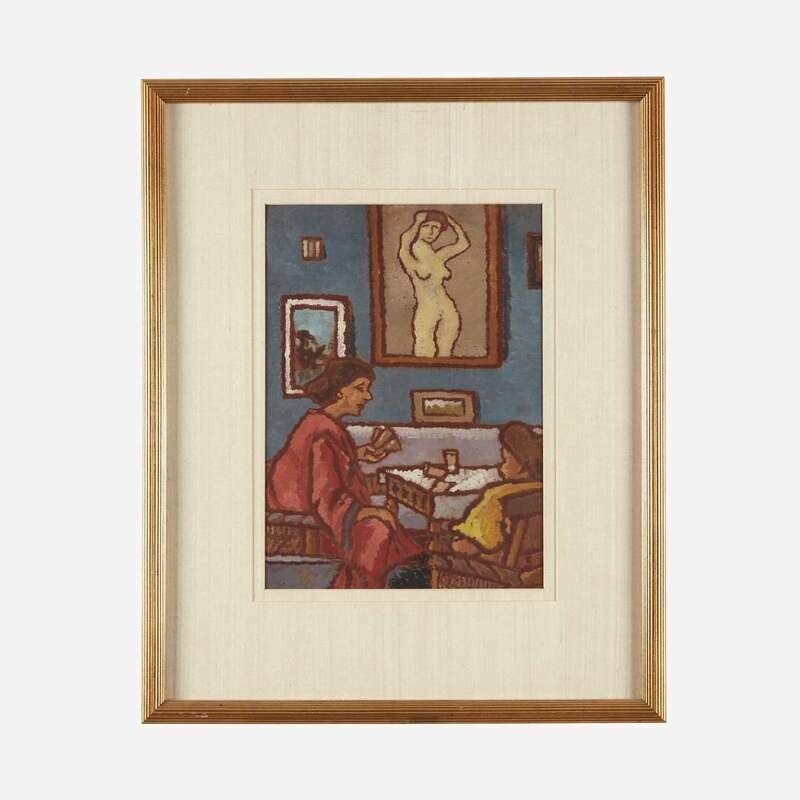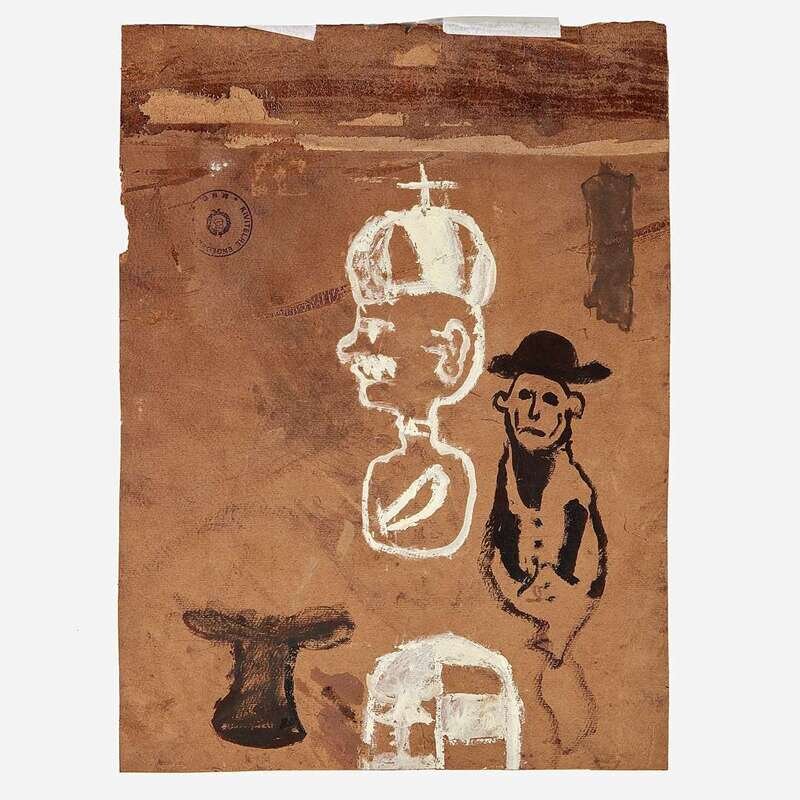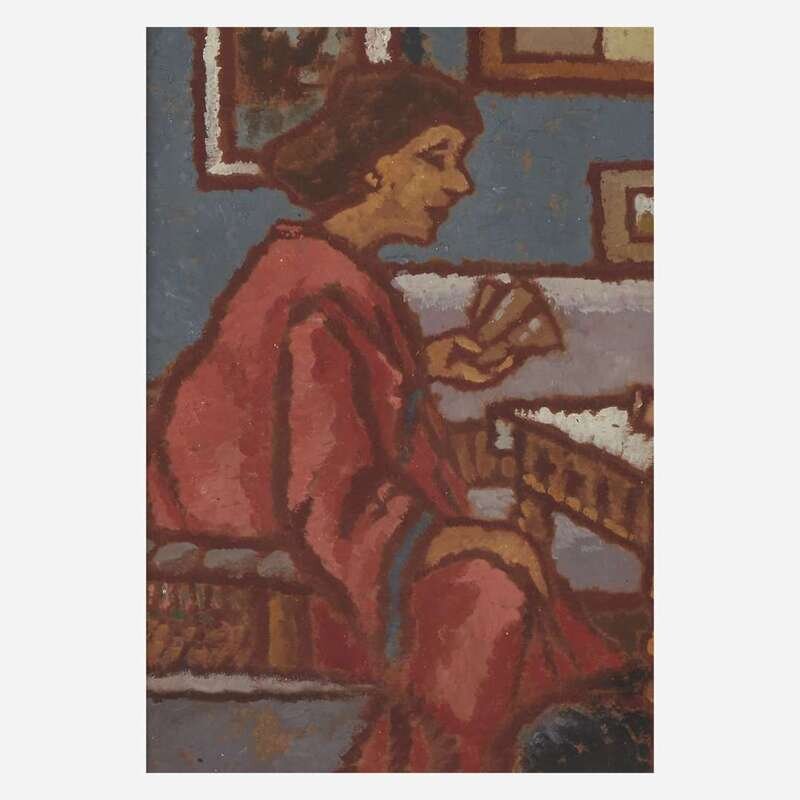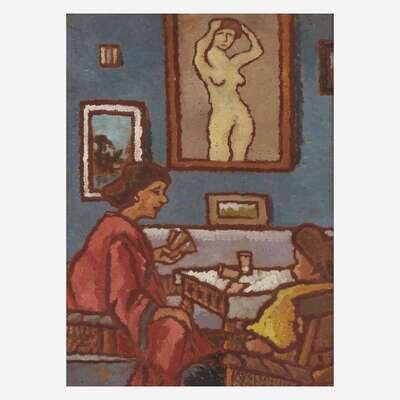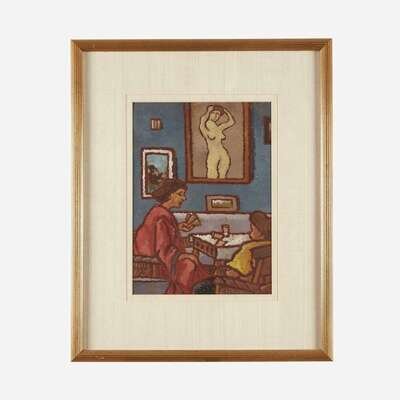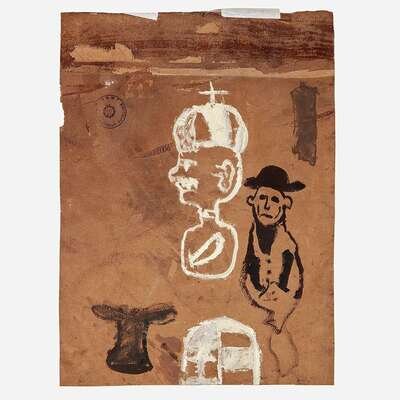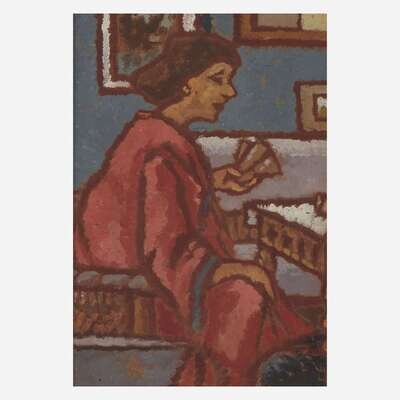Condition Report
Contact Information
Lot 62
Lot Description
Note
The present lot will be accompanied by a Letter of Authenticity written by Borbély László, Chief Inspector of the Hungarian National Gallery, on January 21, 1991. According to László, the board on which the present work was painted favorably compares to the ones in the Hungarian National Gallery. The style appears to be consistent with other similar works Rippl-Rónai produced between 1901-1911, especially Nude on the Terrace (1909, Private Collection, Budapest) and Park with Nudes, in the Janus Pannonius Museum, Pécs, Hungary.
Although he studied most of his early years at the Academy of Munch under Mihály Munkácsy, a major Hungarian painter in the realist tradition, József Rippl-Rónai is widely considered the leading figure of modern painting in Hungary. He was deeply influenced by “Les Nabis:” a brotherhood of artists established in 1888 by Paul Sérusier, and including other artists such as Pierre Bonnard, Maurice Denis, and Édouard Vuillard. The Nabis sought to liberate painting from the traditional tenets espoused by the Académie Julian, and instead favored a more subjective means of expression which emphasized color, line, shape, and expression over formal representation, viewing a painting as “essentially a flat surface covered with colors assembled in a certain order” as Maurice Denis once said. This approach to painting is one in which personal expression and experience is revealed through the use of bright colors, strong outlines, and a flattened surface. Appearing in paintings during the first decade of the 20th century, Rippl-Ronai’s particular form of Nabi-influenced painting has been referred to as a “corn style” (kukoricasnak in Hungarian), in which “blobs or patches of paint merging with one another without free space between them” is employed. At times, ”the outlines of the figures (..) appear rough and irregular in an unusual manner.” This technique, combined with a rich, colorful palette is fully on display in the treatment of both the figures and in the background of the present work - an important rediscovery in the artist’s oeuvre.
Provenance
Private Collection, South Carolina.

